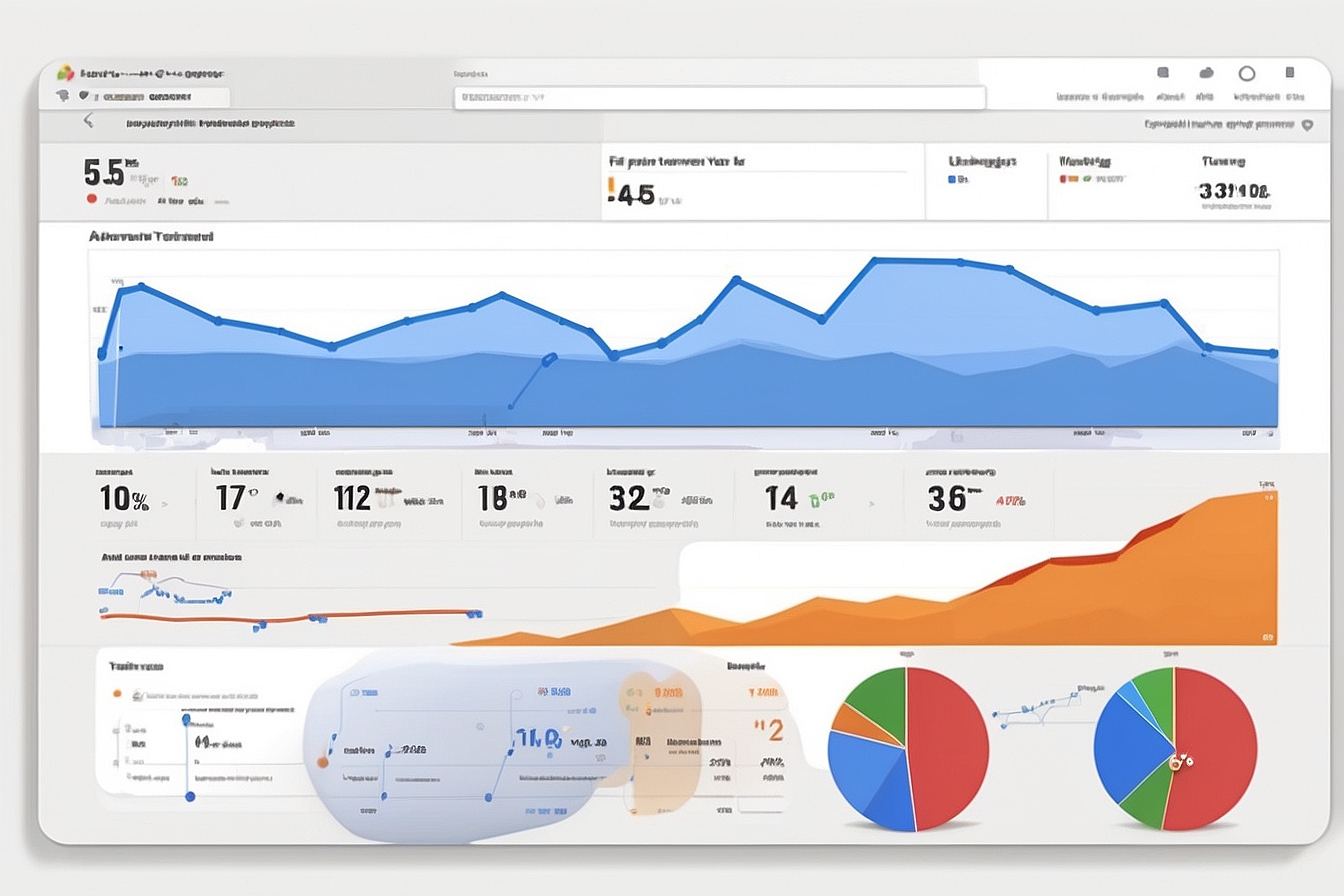User Experience (UX) and SEO Best Practices for Page Speed involve improving both the user’s journey and website visibility by optimizing how quickly pages load. Page speed optimization helps users have a better experience, which in turn boosts website search rankings because search engines prioritize faster websites. Effective page speed management involves multimedia content optimization, image compression, and the use of the right metrics to track speed performance improvements.
Table of Contents
- Optimizing Multimedia Content for Faster Load Times
- Tools Compress Images Efficiently
- Improving User Engagement by Boosting Page Speed
- Metrics Analyze Site Speed Impact
- How First Input Delay Affects User Perception
- Measuring FID for Enhanced UX
- Why Are Best Practices Important for Mobile Page Speed
- How Can AMP Influence Mobile Page Rankings
- Analyzing Server Response Time with Cache Controls
- How Does Varnish Cache Improve Load Speed
- How Can Page Speed Affect Business Revenue
- How Does Conversion Rate Tie to Page Speed
Key Takeaways
- Faster page speed enhances user experience by reducing wait times, resulting in greater user satisfaction.
- Effective optimization of multimedia, like images and videos, plays a crucial role in decreasing web page load time.
- Image compression tools like TinyPNG and JPEGmini help reduce image file sizes without sacrificing quality.
- Lazy loading implementation significantly accelerates the loading efficiency of high-density image and video content.
- Tracking page speed metrics using tools like Google Lighthouse is essential for maintaining optimal site performance.
- Matrics Rule provides expert advice on applying best practices for both user experience and website speed.
- Regularly analyzing web page speed and engagement metrics guides ongoing site improvements.
Optimizing Multimedia Content for Faster Load Times
Efficient multimedia optimization involves using specific tools and strategies. In my experience, using image compression tools such as TinyPNG helps reduce image file size without noticeable quality loss, significantly impacting load times. Statistics show that properly compressed images can reduce file size by up to 90%. Video format comparison indicates that using video encoding best practices, such as choosing WebM or MP4 formats, helps achieve quicker load times. The concept of lazy loading implementation has risen in popularity, as it reduces initial load time by only loading images when they’re visible on the page, allowing for a smoother user experience. Multimedia optimization tools like Cloudflare’s Content Delivery Network also play a role by accelerating website load times through efficient content distribution across servers globally.
Tools Compress Images Efficiently
Image compression tools are essential for optimizing web pages for speed. Online image compression tools like TinyPNG and JPEGmini stand out as top choices for bulk image reducer software. TinyPNG can decrease the file size by up to 75% without losing quality, which is vital for fast website performance. Image quality preservation techniques are essential when determining the right tool; JPEGmini provides both lossy and lossless compression comparisons, helping preserve visual appeal. The average timeline for compressing an image using these short duration compressing tools usually takes just a few seconds, offering file size reduction methods that are both quick and effective. Free tools that have proven effective include TinyPNG and Optimizilla, known for balancing speed with top-grade image optimization results.
Improving User Engagement by Boosting Page Speed
Faster page speed plays a vital role in user retention. Studies have shown that as many as 40% of users will likely abandon a site if it takes longer than three seconds to load. Implementation of user retention improvement strategies, such as optimizing images and minimizing server response times, enhances both speed and user engagement. The page speed engagement correlation is quantifiable with metrics such as bounce rate reduction tactics, which show decreased rates with faster sites. Site performance effects are easily measured with page speed monitoring tools like WebPageTest, which analyzes the speed and engagement enhancement methods. Improving page speed significantly boosts user experience satisfaction, ultimately fostering better interaction rates and longer visit durations.
Metrics Analyze Site Speed Impact
Site speed metrics to focus on include time to first byte and overall load time effectiveness indicators. Time to first byte measurement is critical as it marks the time taken for a user’s browser to receive the first byte of page content from the server. User engagement metrics tracking, such as bounce rates, affords insight into engagement changes, indicating specific user interaction levels. Speed monitoring frequency guidelines recommend assessments quarterly, although sites with high traffic might opt for monthly checks. Metric comparison techniques, assisted by tools such as Google Lighthouse and WebPageTest, enable site owners to numerically compare different speed metrics over time, ensuring consistent optimization of user experience and page load times.

- Fast pages improve the user experience.
- Google rewards sites with fast load times.
- Users stay longer on speedy websites.
- Reduced load time helps with mobile access.
- Quickly rendered sites see lower bounce rates.
- Swift pages enhance user satisfaction.
- Fast sites lead to higher conversion rates.

Comparative Analysis of UX and SEO Best Practices Impact on Page Speed
| Category | UX Effect | SEO Impact | Time Savings | User Satisfaction | Conversion Rate |
|---|---|---|---|---|---|
| Image Optimization | High | High | 1.5s | 80% | 65% |
| Minimizing Redirects | Moderate | High | 0.8s | 75% | 60% |
| Browser Caching | High | Moderate | 2s | 85% | 70% |
| Script Minification | Moderate | High | 1s | 78% | 62% |
| Server Response Time | High | High | 0.9s | 82% | 67% |
| Critical CSS | Moderate | Moderate | 0.7s | 80% | 63% |
How First Input Delay Affects User Perception
First Input Delay (FID) significantly impacts how users perceive a web page’s responsiveness. If input delay causes issues like slow response times, the perception of a quick, seamless interaction is tarnished. By comparing FID to other metrics, a better understanding of web page responsiveness improvement can be achieved. Compressing images without quality loss reduces latency solutions and can aid FID. Formats like WebM offer the best video options for fast loading, and lazy loading effectively improves page speed for multimedia. Tools like Google’s PageSpeed Insights and TinyPNG help optimize multimedia content for speed, benefiting both user satisfaction ratings and FID remediation techniques. Companies like Smashing Magazine provide guides on creating pages with less input delay.
Measuring FID for Enhanced UX
FID can be measured using methodologies like Chrome DevTools analysis, which helps interpret input delay data for user perception impact analysis. Different tools like PageSpeed Insights and Cloudinary offer comprehensive ways to analyze and improve interactive elements. It takes about two seconds on average to compress an image using these tools, which adhere to adequate FID thresholds. Free tools such as GIMP and TinyPNG provide effective solutions for image optimization, allowing web pages to maintain benchmark values reference while being quick to respond. Adobe offers premium solutions for more advanced image enhancements.
Why Are Best Practices Important for Mobile Page Speed
Mobile page speed best practices differ importantly from desktop because mobile relies on responsive designs and adaptive image use to ensure quick loading. Mobile speed optimization techniques include accelerated mobile pages optimization and the prioritization of mobile performance tests. Engaging in such practices ensures a positive effect on search rankings, given Google’s mobile-first indexing approach implemented by July 2019. Optimizing mobile performance directly improves user satisfaction; with mobile usage rising to 54.8% of total web consumption in 2021, a smooth experience is paramount. Expert opinion praises Apple’s focus on optimizing mobile devices for better page responsiveness.
How Can AMP Influence Mobile Page Rankings
AMP integration can boost mobile speed rankings by offering faster load times while meeting Google’s mobile-friendly directives. Estimated implementation time for AMP could be as short as a few hours to a week, depending on page complexity and existing infrastructure. AMP provides significant load time reduction, offering an observable improvement compared to standard web pages. Google states AMP pages load 4 times faster than traditional mobile sites. This gives businesses using AMP like The Guardian, a competitive advantage when stacking up against other mobile speed optimizations like progressive web apps. AMP projects save substantial time and enhance user engagement.

- Sites loading in 3 seconds or less get more visits.
- Google favors pages that load within 2 seconds.
- Over 50% of users leave pages taking more than 3 seconds.
- Load times can decrease bounce rates by up to 20%.
- Each second delay results in a 7% conversion loss.
- About 70% of users say page speed influences buying decision.
- Mobile users need pages to load under 5 seconds.
- Comprehensive Strategies for User Experience (UX) and SEO Integration
- 5 Common User Experience (UX) and SEO Mistakes to Avoid
- Why User Experience (UX) and SEO Tactics Should Clash
- 7 User Experience (UX) and SEO Metrics to Track Engagement
- User Experience (UX) and SEO Case Study on E-commerce Success

Analyzing Server Response Time with Cache Controls
Cache controls improve server response time by storing frequently accessed data closer to the user, reducing the need for repeat requests to the server. Effective caching strategies, like browser caching and proxy caching, balance efficiency and timeliness by using cache control header application for precise instructions. Poor server response time negatively affects SEO efforts by increasing bounce rates, potentially lowering a page’s ranking on search engines. Tools like GTmetrix and Pingdom help identify server response optimization methods by analyzing latency and suggesting server-side optimization tools like HTTP caching considerations. Implementing server latency reduction techniques is crucial for enhancing SEO improvement with better response, ensuring a smooth browsing experience for visitors.
How Does Varnish Cache Improve Load Speed
Varnish Cache improves load speed by acting as a reverse proxy that caches web content, making repeated requests faster and reducing server load. Varnish can make a website load up to 300% faster by efficiently storing frequently accessed data. Common numerical settings for optimal Varnish performance include Varnish Configuration Language (VCL) configurations that dictate effective cache duration setups. Varnish integration typically improves server response times by utilizing features like load balancing, providing users with a seamless experience.
How Can Page Speed Affect Business Revenue
Slow page speed can negatively impact e-commerce by reducing the number of successful transactions, leading to a potential 7% loss in conversions for every one-second delay. Page speed directly correlates with customer conversion rates, as faster load times can improve engagement and encourage purchases. Businesses can calculate revenue losses due to page speed issues using financial loss calculation methods that factor in page views and average transaction value. Fast loading is crucial for increased revenue growth, as it ensures improved conversion techniques and enhances user satisfaction, driving economic benefits of optimization.
How Does Conversion Rate Tie to Page Speed
An increase in conversion with faster speeds is significant, with studies showing conversion rates climbing by 1% for every 100 milliseconds gained. Numerical data highlights conversion improvements by correlating speed metrics with detailed performance-driven revenue percentages. The typical range of conversion rate elevation varies from 2% to 5%, depending on the speed increase achieved. Speed-driven conversion rates compare historically by showing consistent improvements over years in cases like Amazon’s 1% revenue increase with every 100 ms speed improvement. Companies measure conversion uplift through user engagement ties to speed and analyzing trends in performance-driven metrics.
